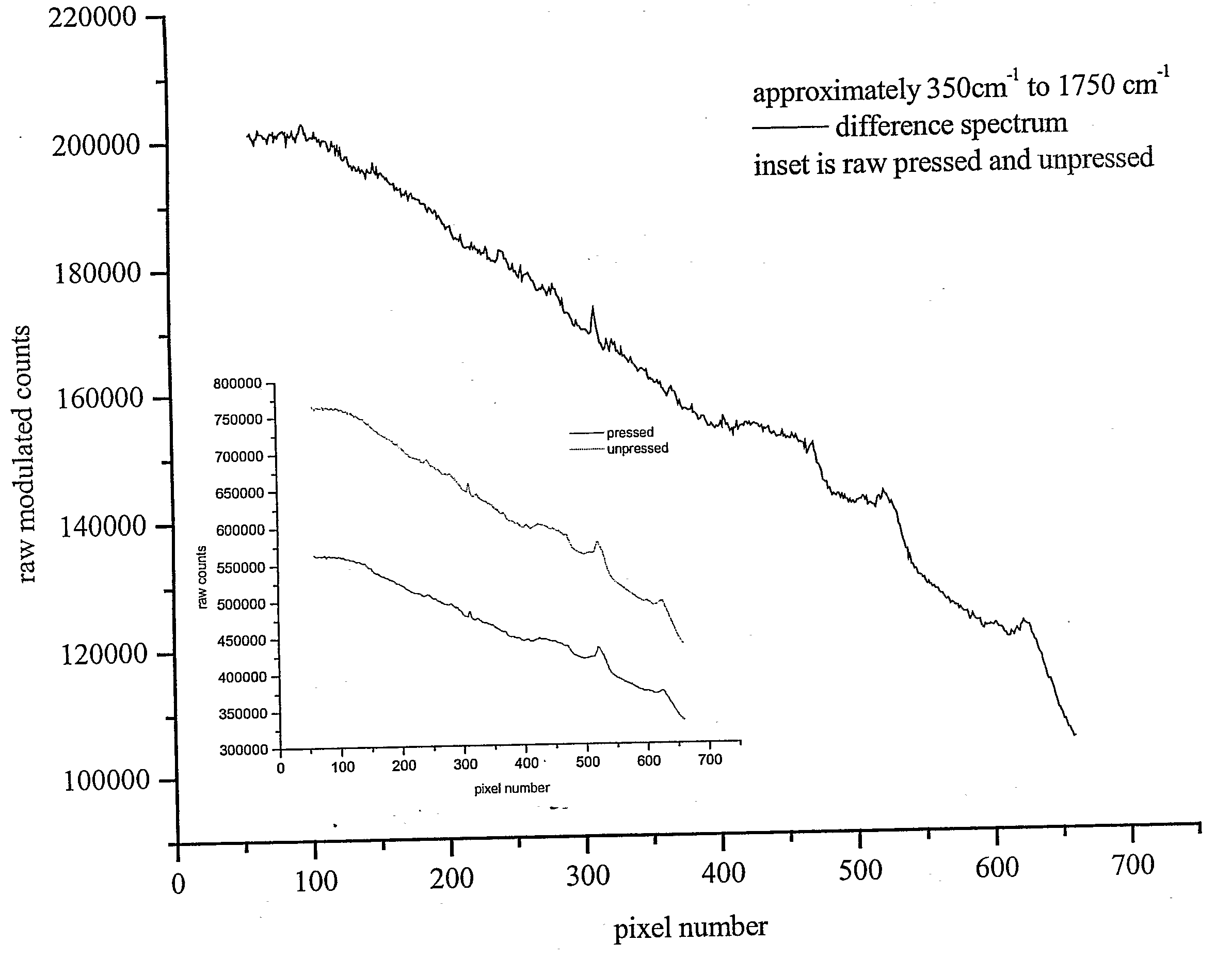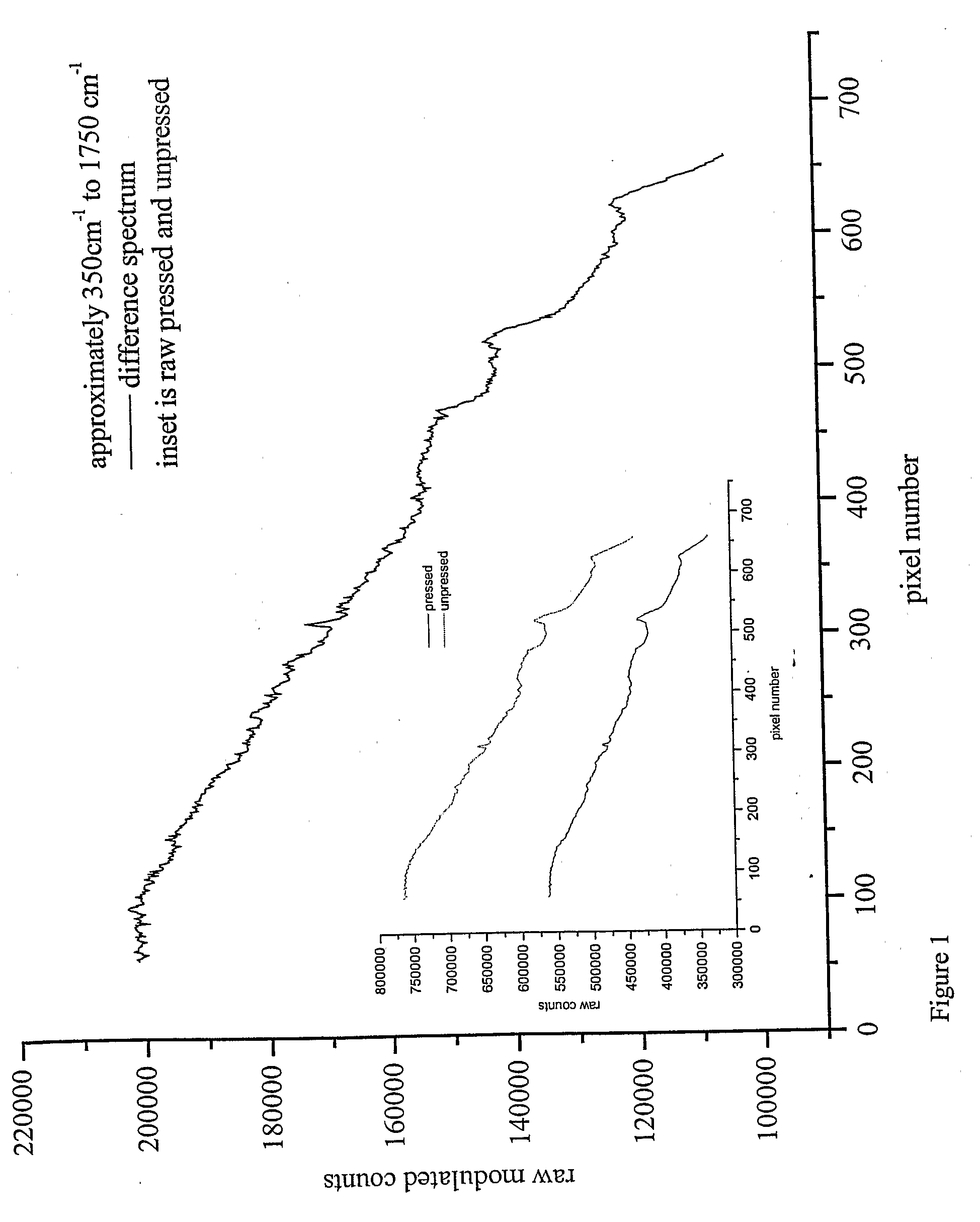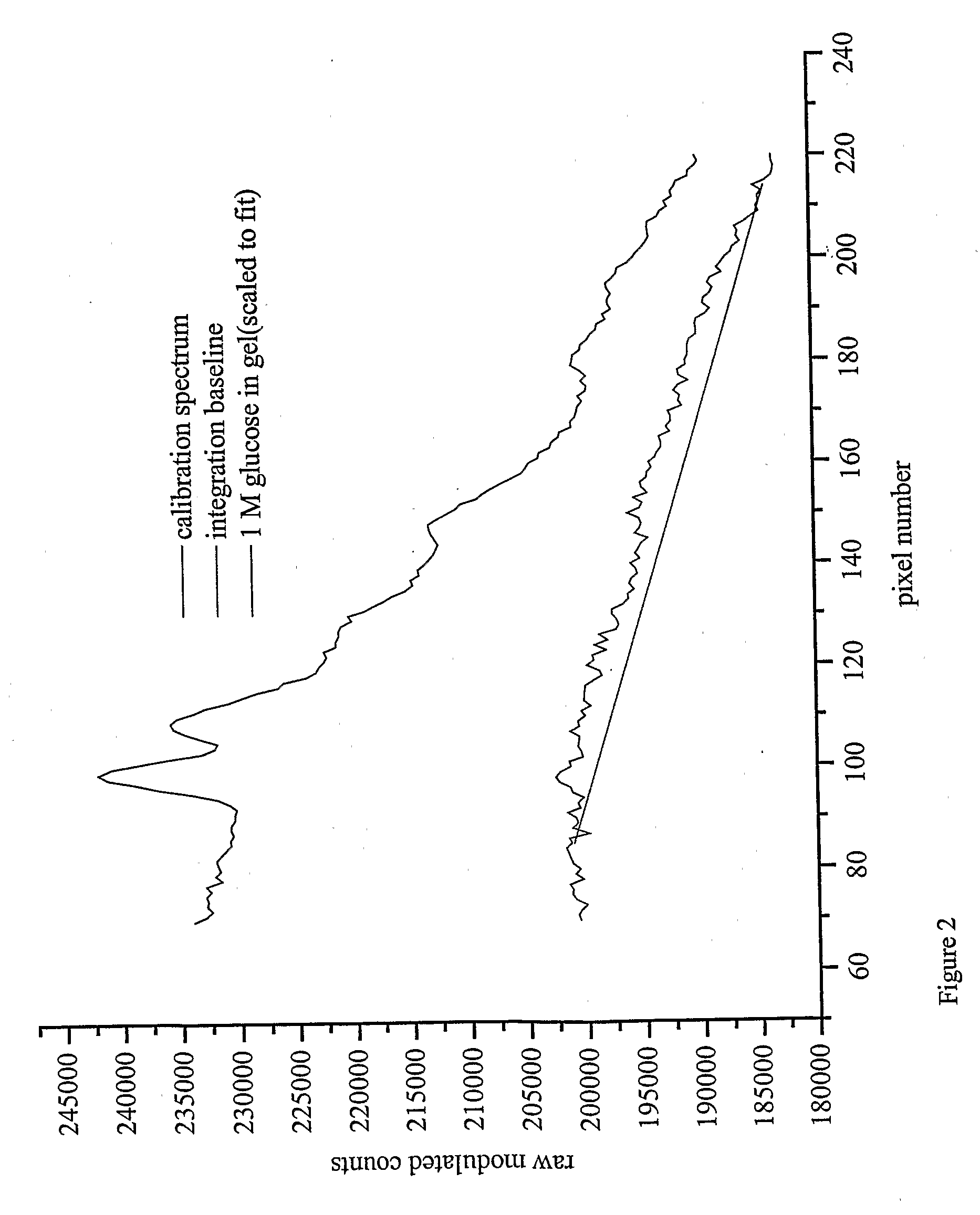Specialized Human Servo Device And Process For Tissue Modulation Of Human Fingerprints
a human servo and fingerprint technology, applied in the field of human servo devices and processes for tissue modulation of human fingerprints, can solve the problems of failure to involve modulation when it is necessary, failure to achieve a greater and lesser degree, and insufficient counting rate of raman photons to allow, etc., to facilitate the optimal placement of the subject's hand, facilitate the placement of the volar side, and facilitate the effect of optimal placemen
- Summary
- Abstract
- Description
- Claims
- Application Information
AI Technical Summary
Benefits of technology
Problems solved by technology
Method used
Image
Examples
example 1
Effect of Hemoglobin Concentration Variation on Glucose Analysis Using Tissue Modulated, noninvasive, In Vivo Raman Spectroscopy of Human Blood: a Small Clinical Study
[0091]In this Example, tissue modulated Raman spectroscopy was used noninvasively to measure blood glucose concentration in people with Type I and Type II diabetes with HemoCue® fingerstick measurements being used as reference. Including all of the 49 measurements, a Clarke Error Grid analysis of the noninvasive measurements showed that 72% were A range, i.e. clinically accurate, 20% were B range, i.e. clinically benign, with the remaining 8% of measurements being essentially erroneous, i.e. C, D, or E range. Rejection of 11 outliers gave a correlation coefficient of 0.80, a standard deviation of 22 mg / dl with p<0.0001 for N=38 and places all but one of the measurements in the A and B ranges. The distribution of deviations of the noninvasive glucose measurements from the fingerstick glucose measurements is consistent w...
example 2
Hardware and Software Implementation of an Optical Grip™
[0136]This Example illustrates implementation of an ergonomically feasible tissue modulator that is easy to execute. To this end, we have designed an “Optical Grip™”. One embodiment is pictured in FIG. 12. One can see that this grip fits the hand nicely and transforms the pressing-unpressing sequence into a grip-ungrip motion. We have found this to be much more comfortable and easier to maintain for the measurement period. Although we strive to make the measurement period as short as possible, and fully expect the eventual period to be under 30 seconds, the easier it is to execute, the easier it will be for people to hold steady during the measurement process. A few other embodiments are shown in FIG. 13.
[0137]The embodiments shown in FIGS. 12 and 13 are aluminum castings, but the preferred embodiments comprise cold-formed epoxy or other plastic material. The embodiments shown in FIG. 13 illustrate a layout for optics and elect...
example 3
Data Collection Using an Optical Grip™
[0146]This Example illustrates information obtained from a subject using a grip of the invention, including the effects of unexpected movement by the subject and how spectra associated with blood glucose can be obtained.
[0147]FIG. 19 shows a window (from a computer screen) containing three panes representing a staged 20 second test. The top pane shows the color coded response of the position sensors. The greater the value on the ordinate, the more physical contact there is between the associated sensor and the fingertip. Dynamic range and magnitude of response can be further calibrated to allow simultaneous moisture estimation. There are four sensors, and only three responses can be seen in the pane, so one can conclude that the finger is not stationary or in perfect position for the measurement. Note that each sensor is sampled twice at about each 20 msec, i.e. each frame is 20 msec. The pressure sensor is on the middle pane and the pressure ch...
PUM
 Login to View More
Login to View More Abstract
Description
Claims
Application Information
 Login to View More
Login to View More - R&D
- Intellectual Property
- Life Sciences
- Materials
- Tech Scout
- Unparalleled Data Quality
- Higher Quality Content
- 60% Fewer Hallucinations
Browse by: Latest US Patents, China's latest patents, Technical Efficacy Thesaurus, Application Domain, Technology Topic, Popular Technical Reports.
© 2025 PatSnap. All rights reserved.Legal|Privacy policy|Modern Slavery Act Transparency Statement|Sitemap|About US| Contact US: help@patsnap.com



